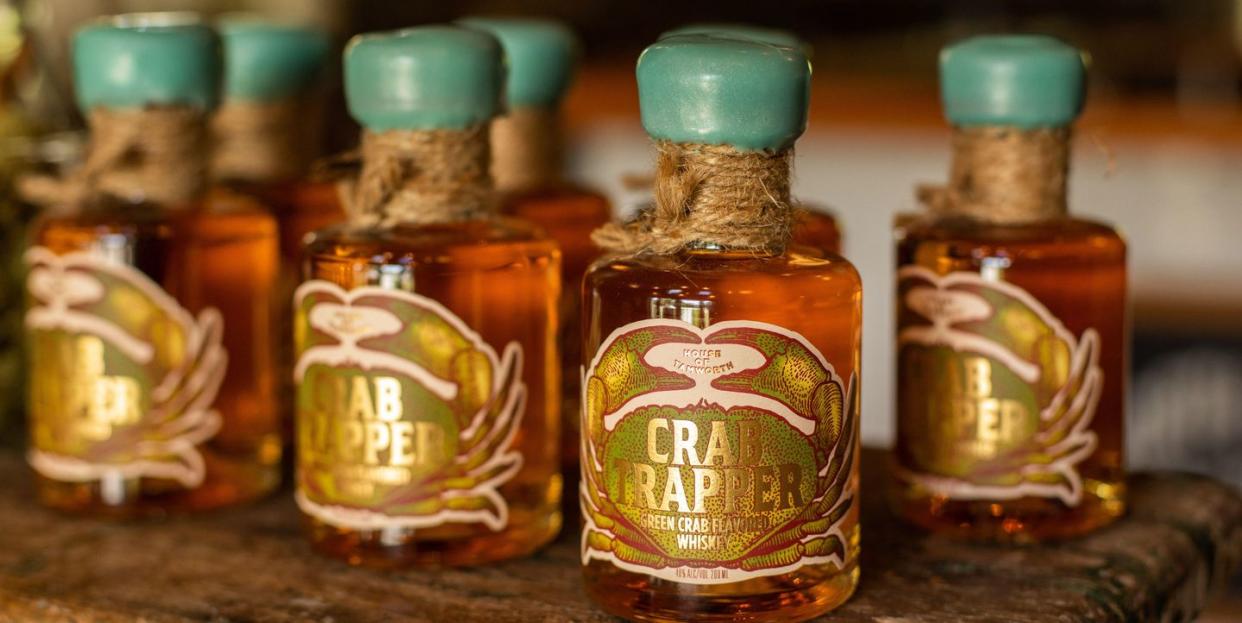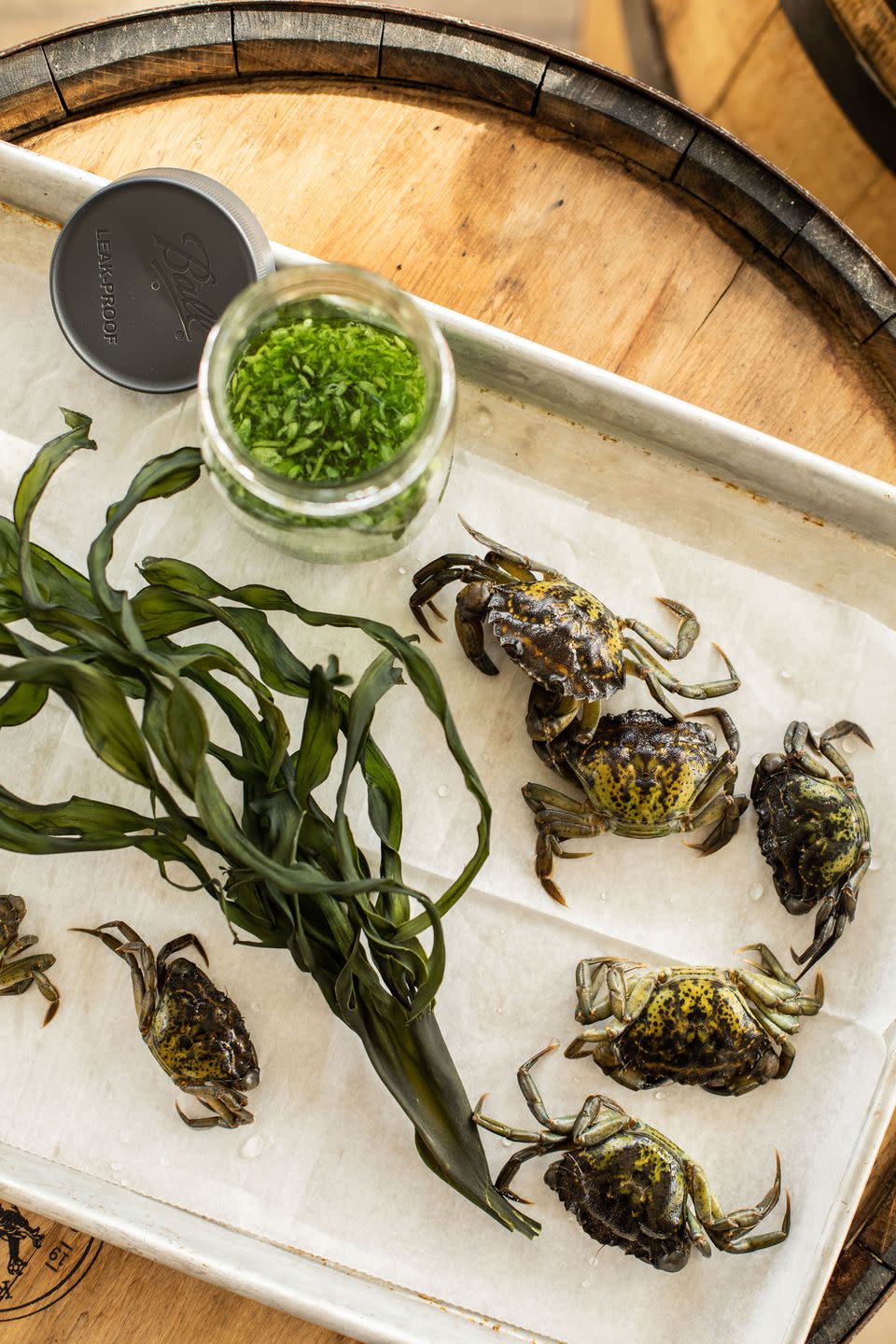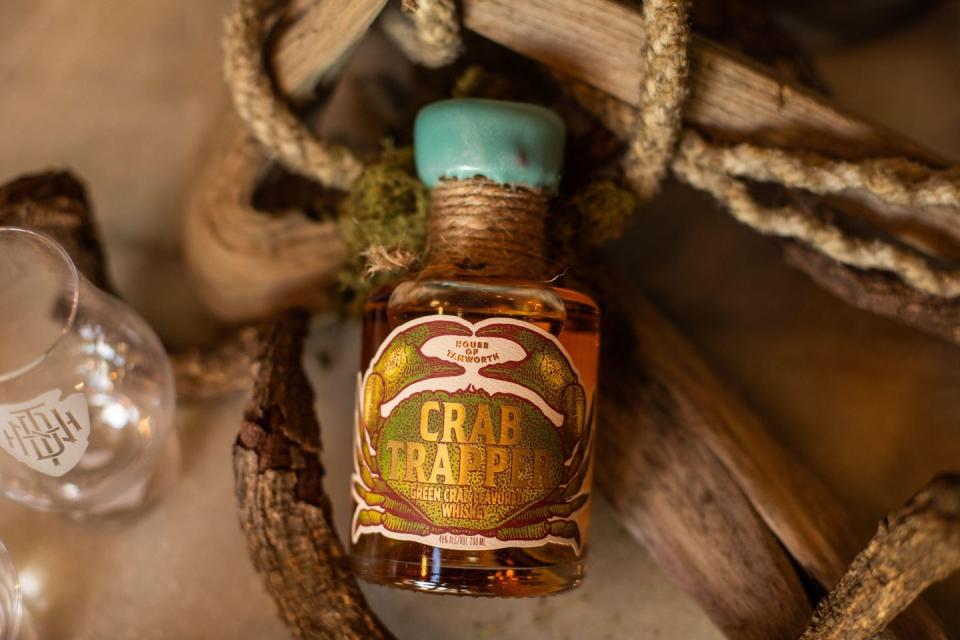This Whiskey Is Made From Invasive Crabs And Tastes Like Fireball

Crab-flavored whiskey? Yes, it's a thing.
New Hampshire's Tamworth Distilling is shaking things up with an innovative effort to help eradicate the invasive European green crab. The limited-release House of Tamworth Crab Trapper whiskey is made from an aged bourbon and over 90 pounds of green crabs harvested from a local trapper. The thousands of crabs are cooked down into a stock, blended with the bourbon, and steeped with spices reminiscent of a low-country seafood boil.
The result is "briny and better Fireball," according to Tamworth founder Steven Grasse. You'll find notes of maple, vanilla, and caramel on the nose with the warm flavors of cinnamon, clove, and all-spice adding a bit of heat.
“Totally unexpectedly, crab and whiskey do in fact go together. But who knew the unique flavor combination would create an all-natural and sustainable riff on Fireball? We certainly didn’t!” Grasse said.
When you think of invasive species, eating them may not immediately come to mind. But green crabs, which have long wreaked havoc on the New England coast, are in fact edible.
"People have a negative connotation of things that are quote unquote invasive," said Gabriela Bradt, Ph.D., founder of the NH Green Crab Project and fisheries specialist at the University of New Hampshire Cooperative Extension. "Just because it's not supposed to be here doesn't mean you can't eat it."
Bradt, who worked with Tamworth to develop the crab whiskey, is investigating the creation of viable markets and fisheries for the green crab to help mitigate the problem. The green crab is quite small, which is why they're often used as bait or to make broth. But you wouldn't steam and eat green crab like blue crab. "The amount of time it takes to pick it, and then processing and everything, would just make the price per pound skyrocket," Bradt said.

Originally from Europe, the green crab made its way to New England in the early 1800s via ships and quickly flourished due to their ability to tolerate extreme conditions. The cold New England winters have traditionally kept the population down, but rising temperatures over the last 10 to 15 years have caused the population to explode, according to Bradt. A single green crab can eat 40 to 50 clams a day, which has greatly impacted the ecosystem of New England.

“This collaboration [with Tamworth] is a really unique and exciting opportunity to help educate the public about green crabs, climate change, and sustainability," said Bradt.
“All of us at Tamworth Distilling are passionate outdoor enthusiasts. Sustainability and the wilderness surrounding our facility in Tamworth, New Hampshire, is a major source of inspiration for all new products," Grasse said in an announcement. "The unexpected results of these wild experiments are why we love using local flora and fauna as ingredients in our spirits."
The limited-release Crab Trapper whiskey (92 proof, 200 ml, $65) is available at seelbachs.com, Tamworth Distilling, and Philadelphia's Art in the Age.
You Might Also Like

